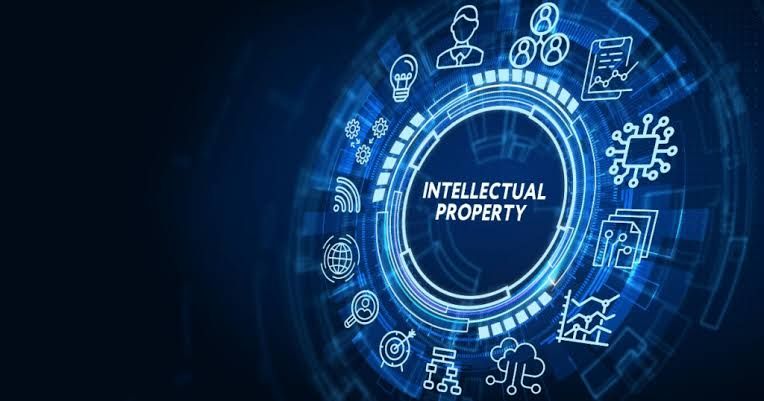SOCIAL MEDIA AND FREE SPEECH IN INDIA

(Author: Ananya Mishra, a 1st year BA.LLB Student at Institute of Law, Nirma University)
ABSTRACT:
In the contemporary world everyone uses social media. Though social media has its own flaws, it still cannot be avoided as it is a unique tool that connects, collaborates, and unites people even when there might be territorial distance. On social media an individual can exercise his fundamental right to freedom of speech and expression, but this right comes along with a duty and there are reasonable restrictions applicable on this right. This article implores the right to freedom of speech and expression in relation to social media.
INTRODUCTION:
In modern times, social media has become an integral part of everyone’s life, it is a platform that enables people to share their unfiltered thoughts, ideas and helps them in communicating even when they might be at different places. Today, social media has become more of a necessity. But when people can share their raw ideas on such a platform, it might have a negative or a positive impact on the people exposed to such content. This makes it important for the judiciary and legislation to examine the extent of freedom of speech and expression given to the people of India and set certain reasonable restrictions on it to avoid disharmony which unrestricted speech can lead to.
WHAT IS SOCIAL MEDIA?
Social Media is a combination of various technologies which facilitates mass communication on the Internet through which people can share their ideas, information, photographs, videos, or private messages. Social Media has made the world a more interconnected place as it provides real time information. There are social media platforms such as YouTube, WhatsApp, Instagram, X (formerly Twitter), Snapchat etc. There is an estimate that almost 60% of the global population (or roughly 4.6 billion people) use social media. It can be used to spread vital information at times of emergencies and spread awareness or show discrimination etc. But it is often used to spread false information which can lead to polarization.
FREEDOM OF SPEECH AND EXPRESSION
The idea of free speech has existed since very ancient times. The Greeks were the first ones to use it and was later on adopted by countries like England and France. It is recognized as a human right by the Universal Declaration of Human Rights by the UN General Assembly.
The Constitution of India guarantees Freedom of Speech and Expression to all its citizens. “Freedom of Speech and Expression” means that every individual has the right to freely express their opinions, ideas or thoughts through speaking, pictures, expressions, gestures, print media or other medium of communication.
The Constitution of India grants Freedom of Speech and Expression in Article 19(1)(a). This fundamental right is only available exclusively to the citizens of India and not to foreign nationals. This fundamental right is not absolute and comes with certain responsibilities and thus it is subjected to certain reasonable restrictions.
This right holds importance as it can lead to social change. In today’s time social media can also lead to social change when combined with freedom of speech and expression. For Example, social media took movements like ‘Black Lives Matter’ and ‘Me Too’ to India and other countries. Earlier, women in India were not given voting rights but eventually they were given the right to vote in General Elections of 1951 because of this right is guaranteed to all citizens which included women.
ELEMENTS OF RIGHT TO FREEDOM OF SPEECH AND EXPRESSION:
The essential elements of right to freedom of speech and expression are as follows:
- Under Article 19(1)(a), freedom of speech is not absolute, which means that the government can make laws and impose reasonable restrictions in order to maintain the public order, morality, decency, relations with other countries, sovereignty and integrity of India, security of the state, defamation, incitement of an offence and contempt of court.
- Under Article 19(1)(a) of Indian Constitution, freedom of speech gives right to express to an individual through any medium such as written, printed, gestures etc.
- This right is only available to the citizens of India and not to persons of other countries i.e. foreigners
- If the State fails to guarantee freedom of speech and expression to all its citizens, then it will also be considered as the violation of Article 19(1)(a) of the Indian Constitution.
WHAT ARE REASONABLE RESTRICTIONS?
In a country that values democracy, it is necessary to preserve their right of freedom of speech, but it should come along with certain reasonable restrictions in order to maintain social order as some people can misuse such freedom. These restrictions are mentioned in clause (2) of Article 19 on freedom of speech and expression on specific reasons or grounds.
The grounds for restriction are:
- Friendly relations with a Foreign State: If the individual’s expression of free speech jeopardizes the relations between that country and India, then the government has the right to impose this reasonable restriction and can take action as it hampers the friendly relations between the two countries.
- Security of the State: The term ‘security of the state’ means insurrection, waging a war against the state, rebellion etc. It does not only mean threat to the security of entire country, but it can also mean threat to the security of states or parts of state. This restriction was added through the Constitutional First Amendment in 1951.
- Public Order: The term ‘public order’ means peace within a community, maintenance of peace in public and safety of the public. This restriction was added through the Constitutional First Amendment in 1951.
- Decency and Morality: This term has wider scope for interpretation and is subjective. It distinguishes from society to society and time to time depending upon the morals which prevail in contemporary society.
- Contempt of Court: Judiciary plays a important role in a democratic country. This term means commission of an act leading to legal violation of a court’s judgement or interference in the legal process of the court.
- Sovereignity and Integrity of India: The main role of the government is to maintain the sovereignty and integrity of India. This ground was added by the Sixteenth Constitutional Amendment.
- Defamation: Defamation occurs when a statement made by one person damages the reputation of other man. Article 19(2) prevents a person from making a defamatory statement and is a valid restriction on free speech.
- Incitement of an Offence: This ground prevents people from making a statement that can incite people to commit an offence. This restriction was added through the Constitutional First Amendment in 1951.
RELATIONSHIP BETWEEN SOCIAL MEDIA AND FREEDOM OF SPEECH AND EXPRESSION:
The Internet and Social Media platforms such as Facebook, X (formerly Twitter) and Instagram etc. have amplified spread of disinformation, hate speech and propaganda throughout the globe by using the pretext of right to freedom of speech and expression. The negative impact of social media is increasing.
Free speech is like a double-edged sword. These social media platforms give individuals an option to be identified or remain anonymous. The creation of fake profiles is also on the rise leading to hate speech and posting of inappropriate videos on such platforms. Both identified and anonymous users share the same freedom of speech when expressing their opinions online. Anonymous social media users usually escape liability whereas the identified user is held liable and is scrutinized for all his actions on the social media site. It can also lead to trolling of the identified user as his profile is publicized.
There is unabashed misuse of free speech on online platforms. Most of the people who believe in false information are those who cannot verify the veracity of the facts in the information.
The objective of the right to freedom of speech and expression or free speech is to encourage people to express their opinions online without the fear of ramifications. Though the goal of this right has been achieved but it has also created a new challenge to curb hate speech and false information. Social media has also given an opportunity to those who want to spread false information and incite violence on the pretext of freedom of speech and expression.
As the rate of people joining such platforms increases so does the rate of spread of disinformation. Such social media sites need to have clear guidelines and should encourage people to report the users who spread false information or any other inappropriate content on their platform.
STRIKING A BALANCE BETWEEN FREEDOM OF SPEECH AND HURTFUL SPEECH:
It is crucial to strike a balance between freedom of speech and expression and harmful speech. There need to be transparent policies on content moderation by the government and encouraging public awareness on becoming a duty-bound digital citizen.
The Constitution, local laws and human rights conventions define the limits of freedom of expression. The restrictions include public order, morality, decency, national security. There is a need to identify and implement these restrictions effectively in order to maintain the balance between free expression and harmful speech.
The response to a harmful speech should be proportionate and not excessive. It should include the intention of the speaker, the words used in the speech and their impact on society, and the response should also need to be coherent and applied uniformly.
There also need to be well defined and transparent principles which should define the types of speech and should create a distinction between freedom of speech and hurtful speech as vague definitions can lead to subjective decision-making.
CASE LAWS:
These are a few case laws that are important legal precedents related to social media and freedom of speech in India:
- Indian National Congress vs Union of India (2014): In this case the Supreme Court held that Section 66A was valid. The court also held that speech made online could only be restricted if it posed actual threat to public order or had the potential to incite violence.
- Faheema Shirin R.K. vs Union of India (2019): In this case it was held by the Kerala High Court that an individual’s freedom to expression and choice could not be curtailed based on objections raised by others on a social media platform. The court also highlighted that it’s crucial for individuals to express their opinions without the fear of censorship.
- Kamlesh Vaswani vs Union of India: The issue in this case was restricting websites that host harmful content, especially child pornography. The Supreme Court held that social media platforms have an obligation to proactively detect and prohibit access to such content to protect children.
- Maheshwari vs Union of India: In this case, the please sought to have the FIR against the social media user (who was accused of posting inappropriate content) quashed. The Supreme Court emphasized that social media users cannot be held liable for mere sharing or forwarding of content.
CONCLUSION:
In the digital age, social media platforms have revolutionized communication, emphasizing the importance of free speech. India acknowledges the fundamental right to freedom of speech, but it also places reasonable restrictions to maintain harmony and public order. Care must be taken while navigating the legal limits of free speech on social media platforms to ensure a balance between voicing one’s opinions and prevention of harmful speech.
SOURCES:



